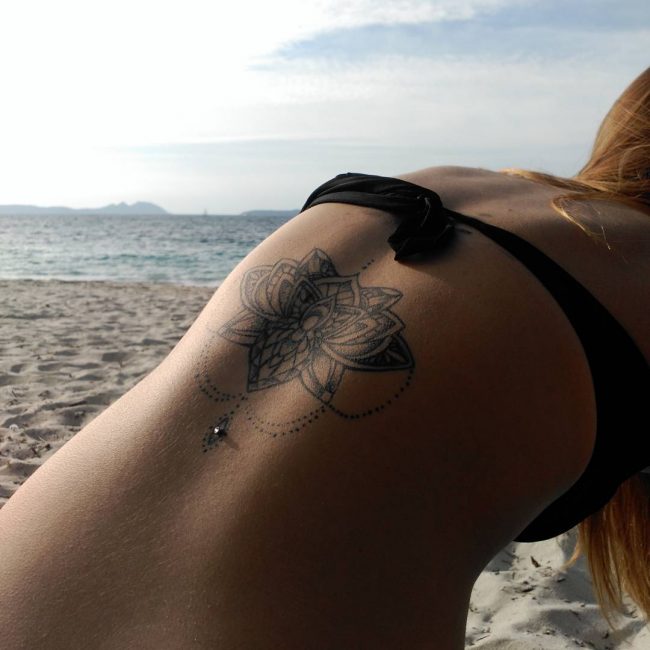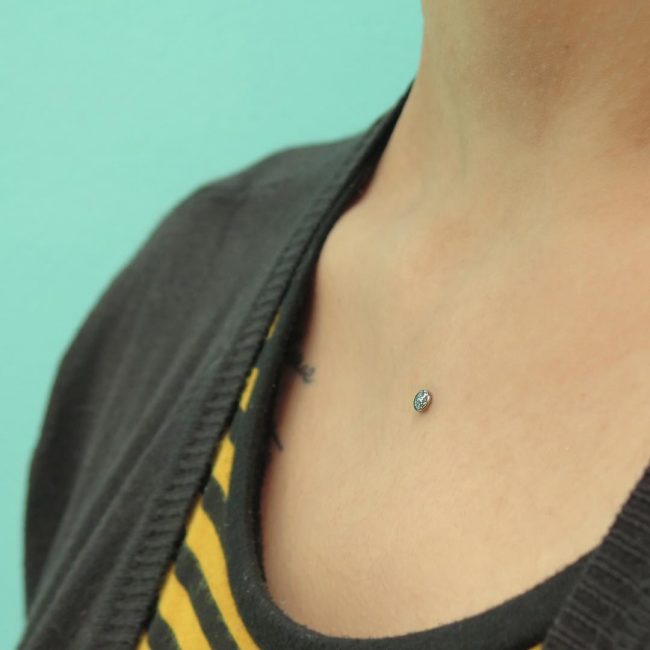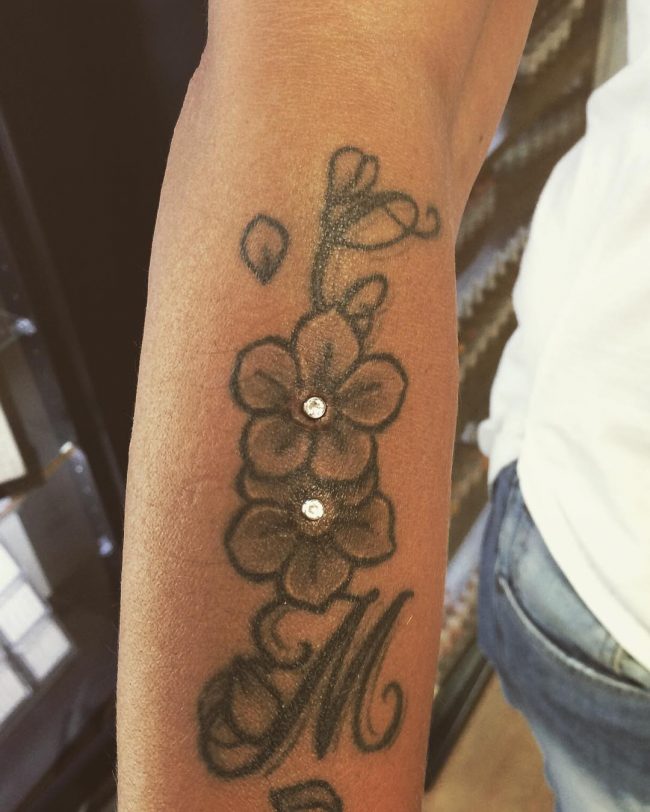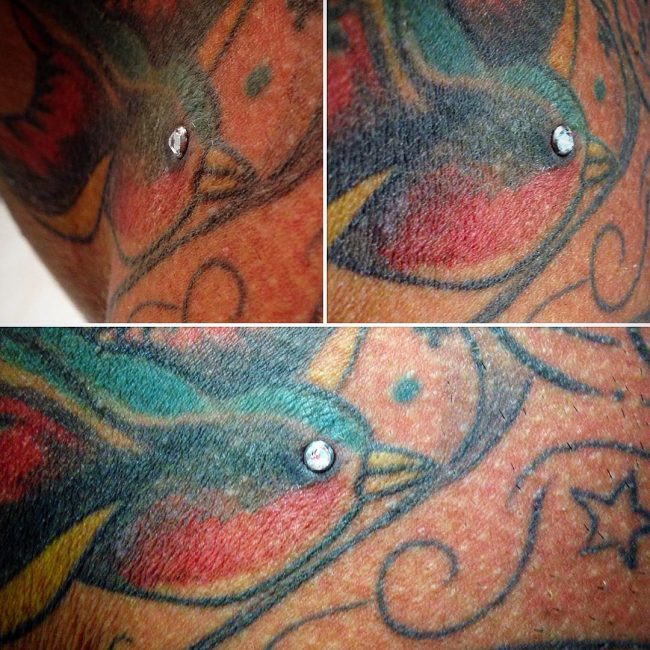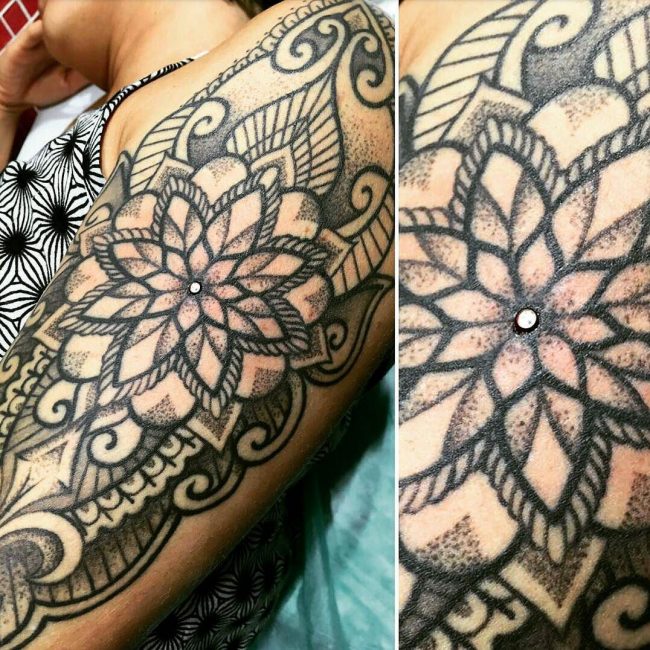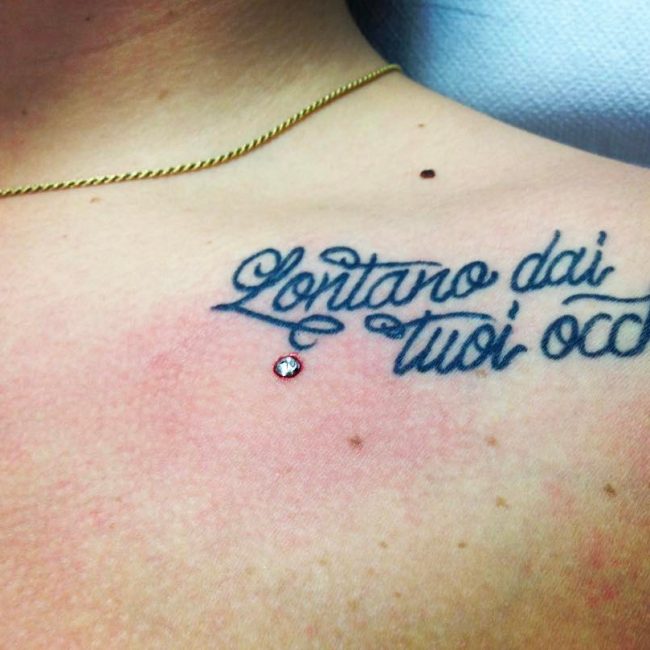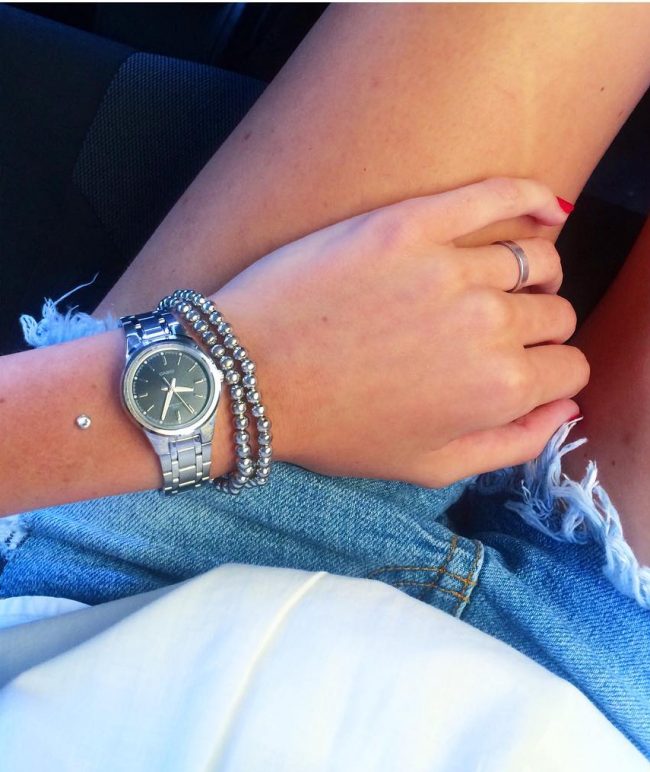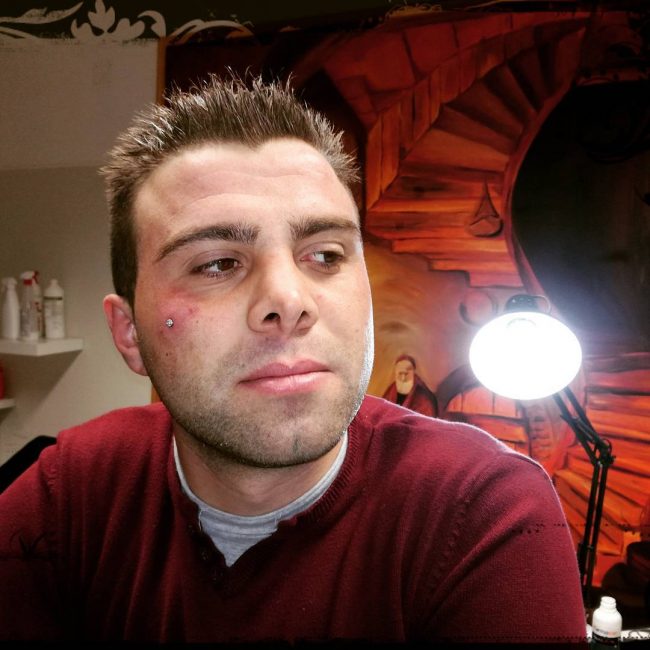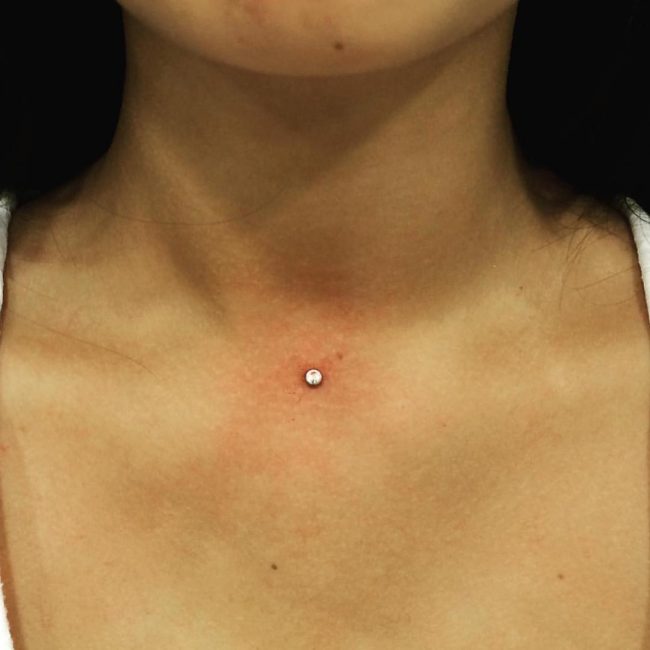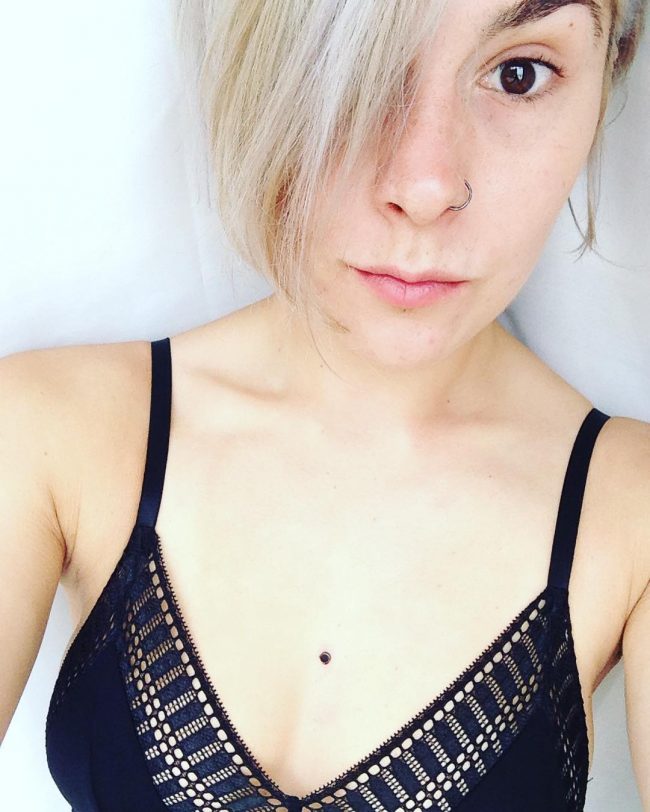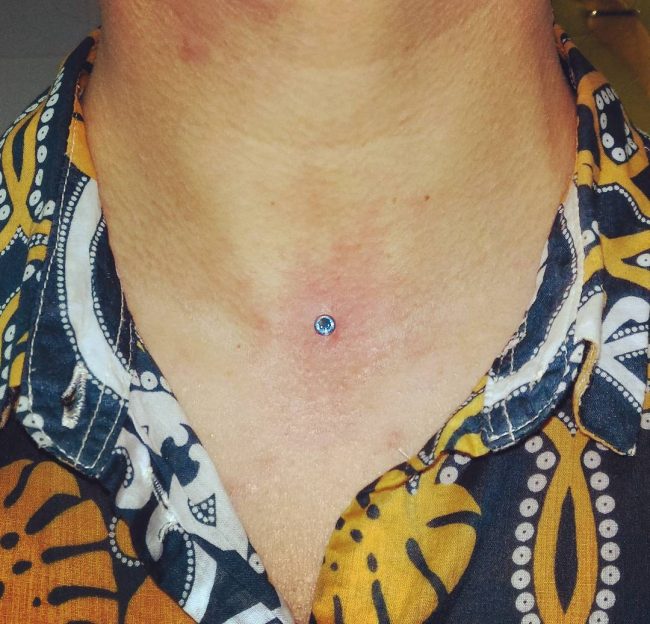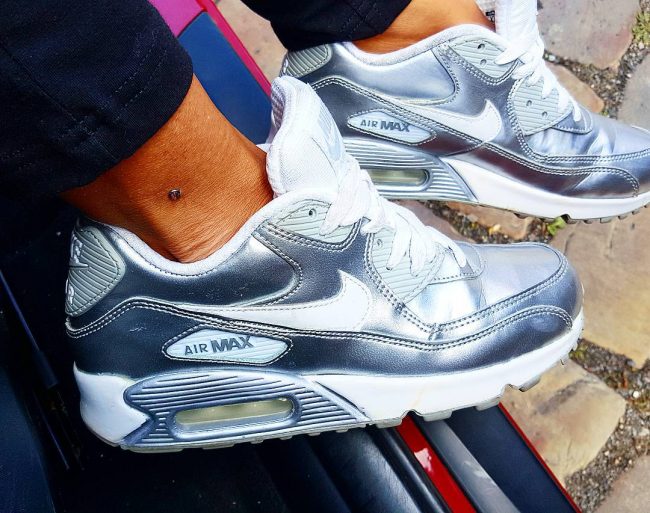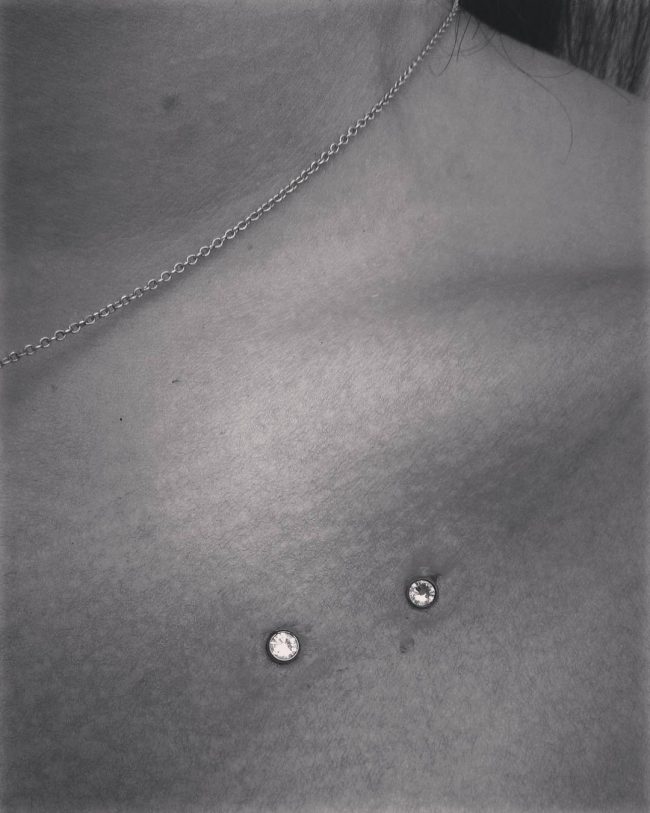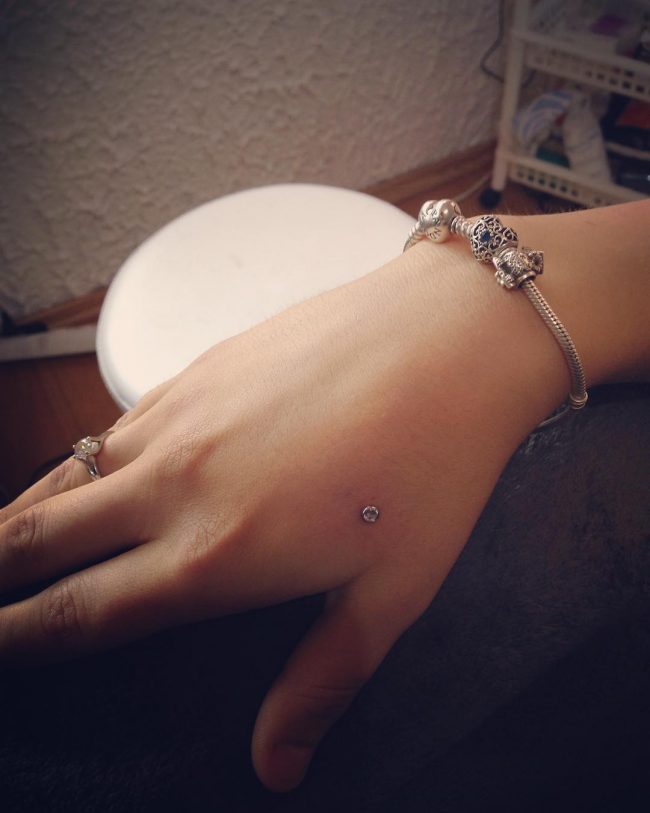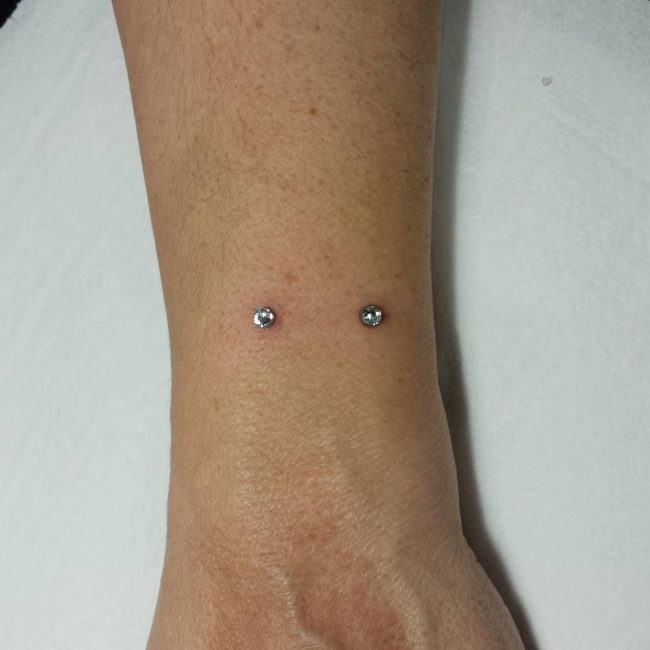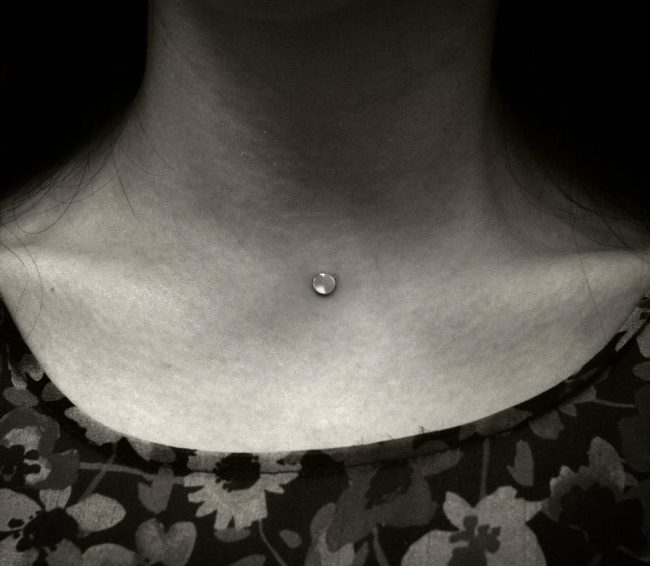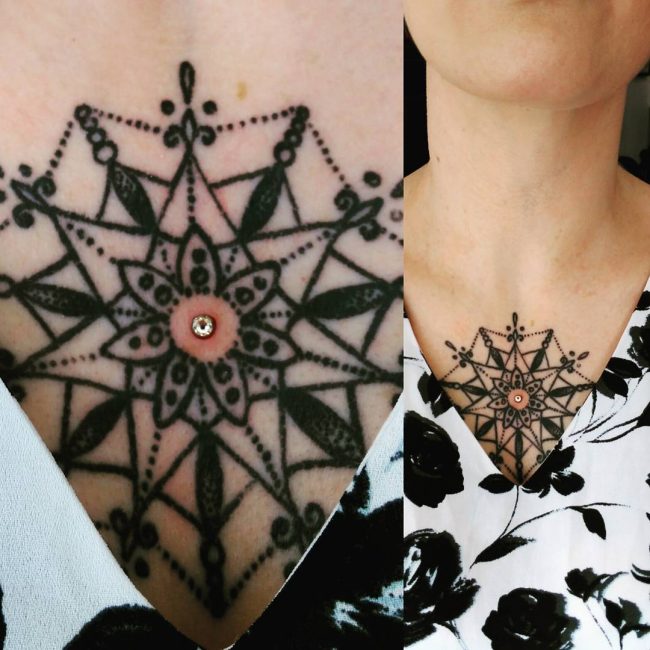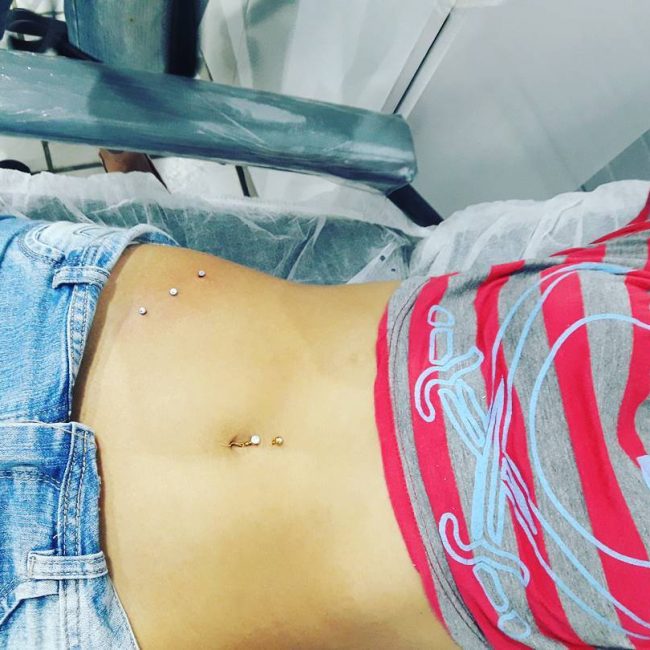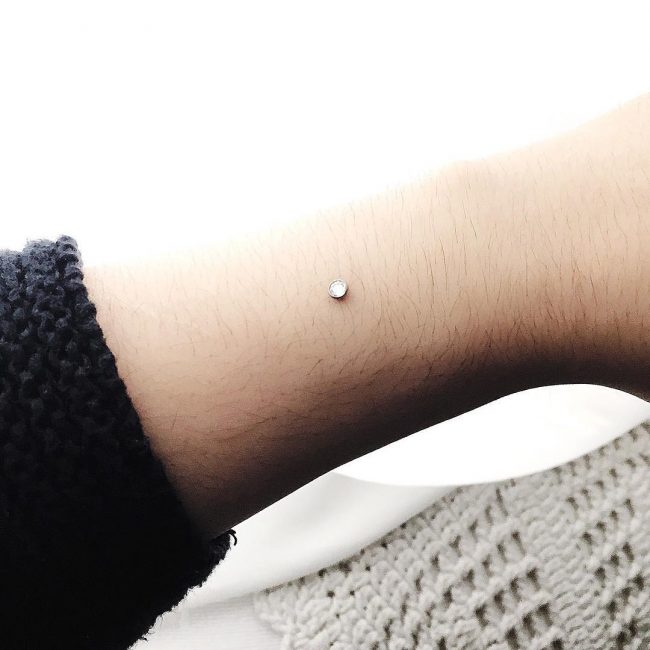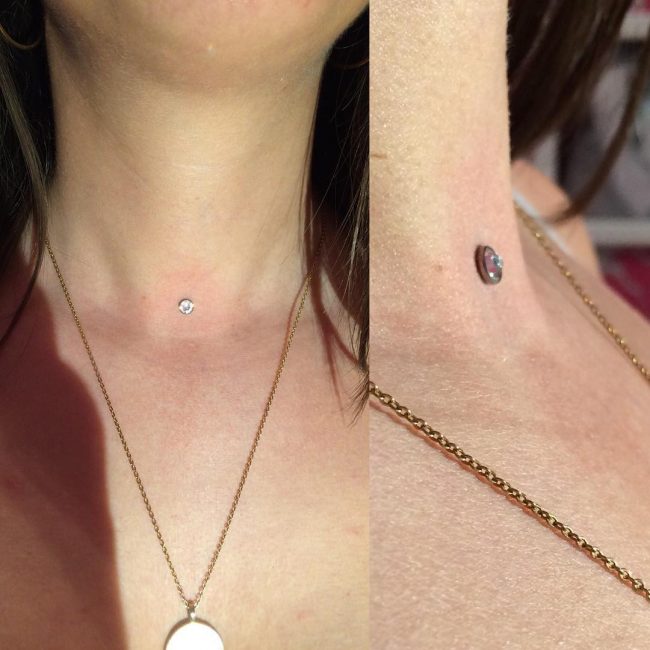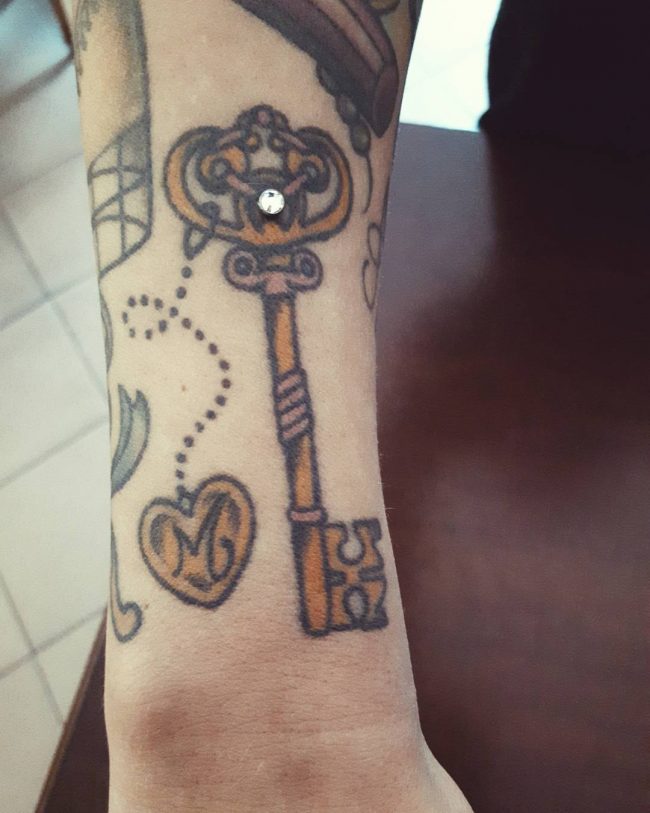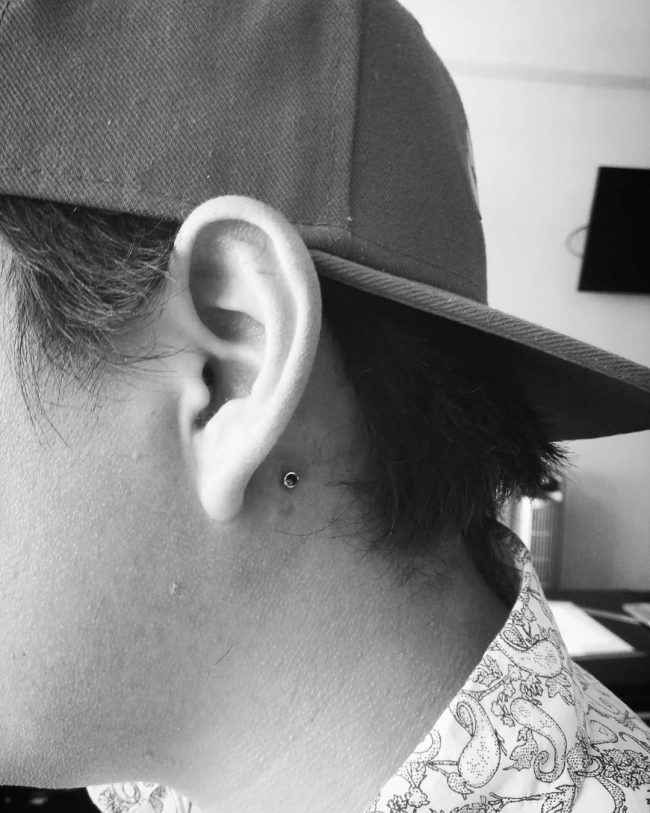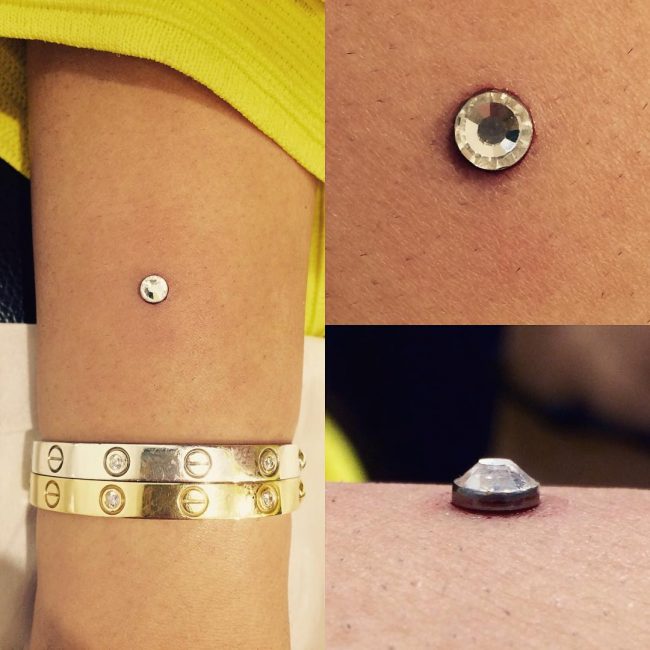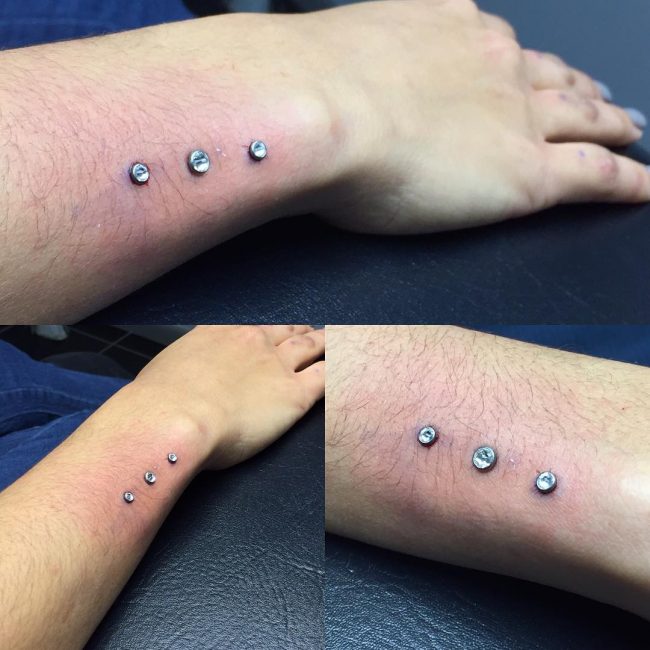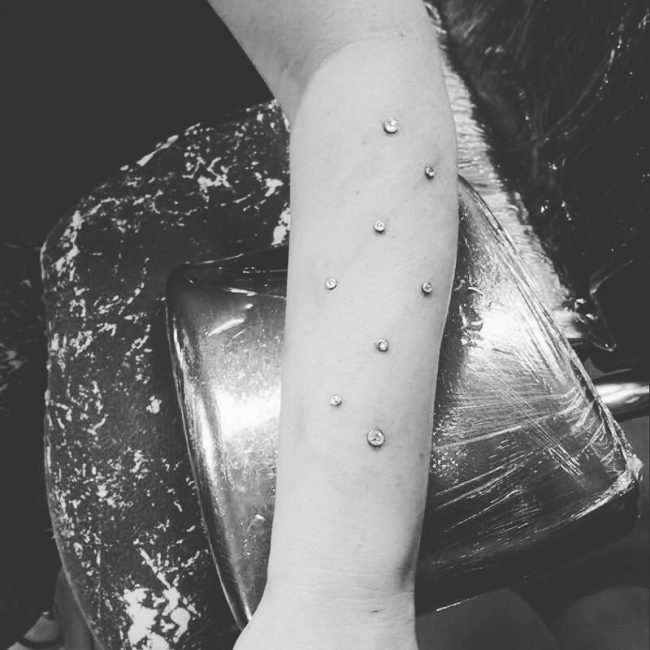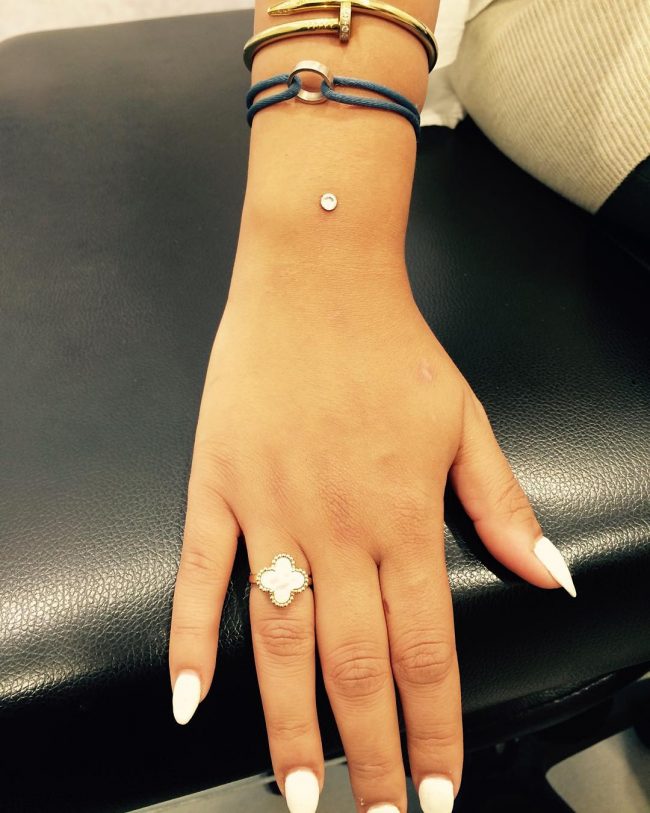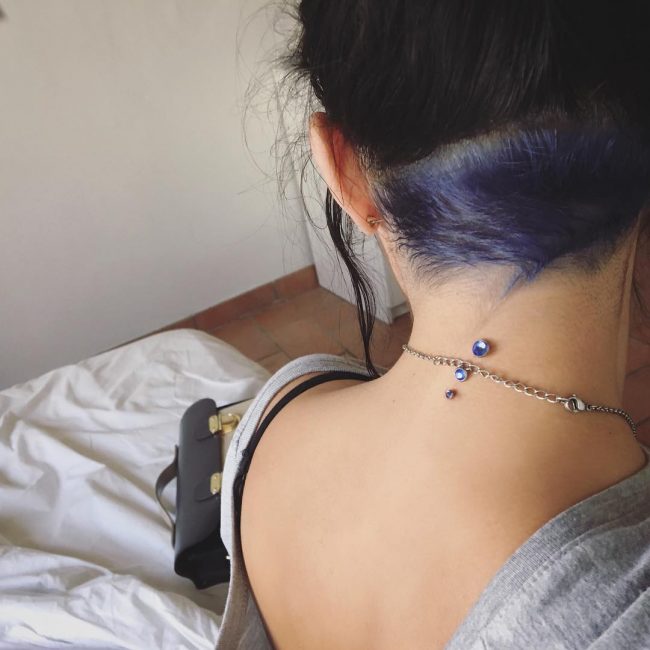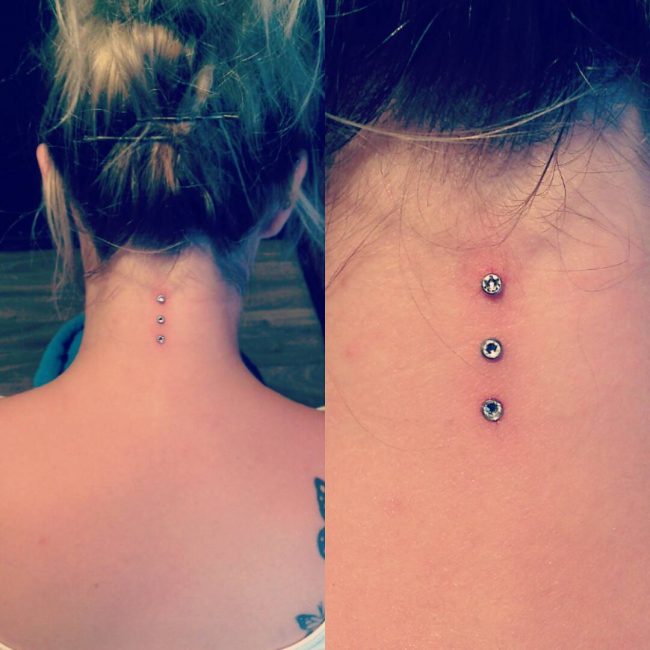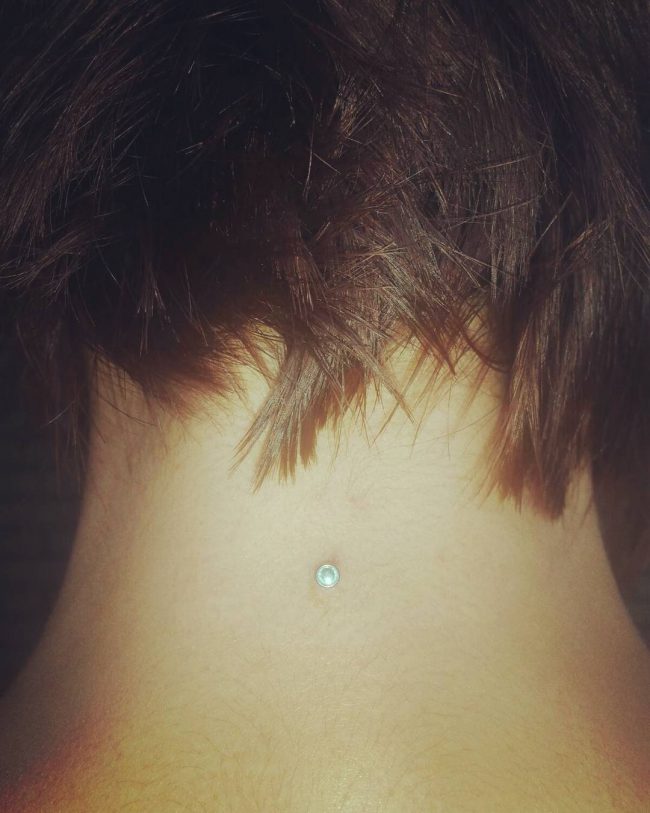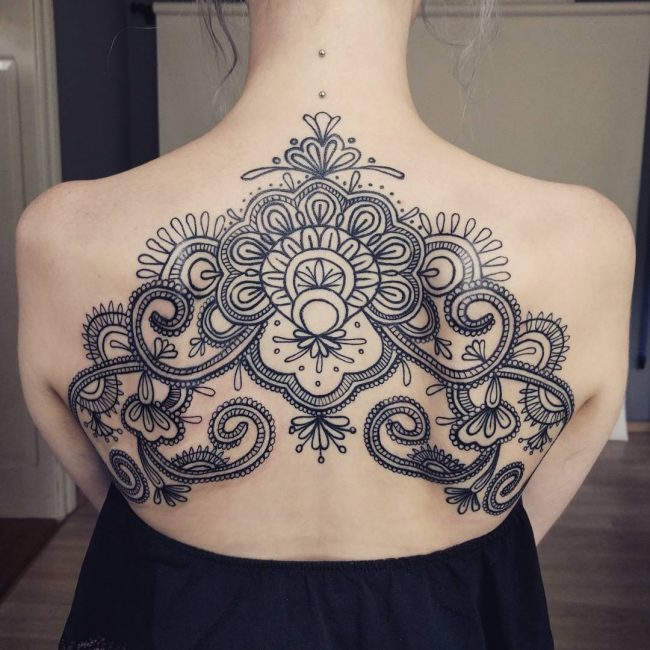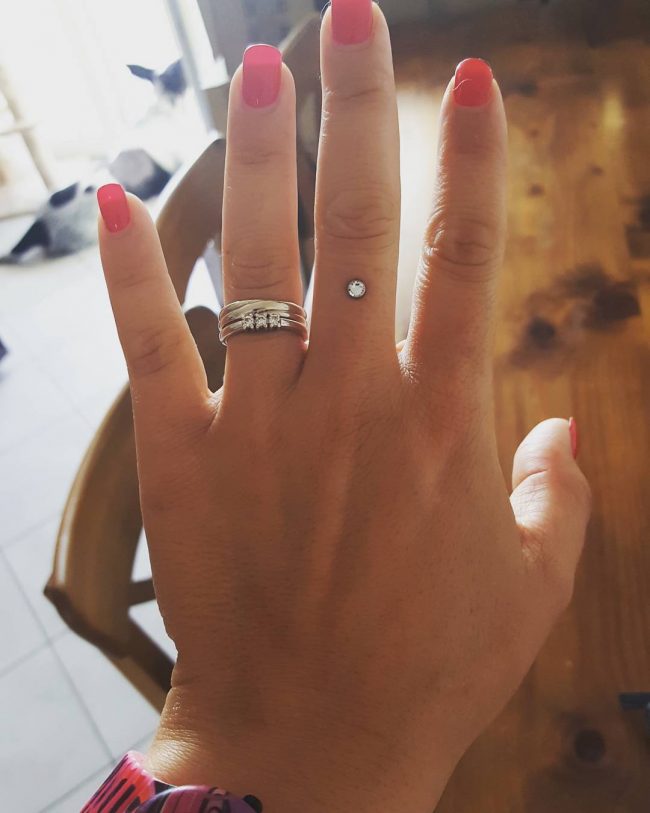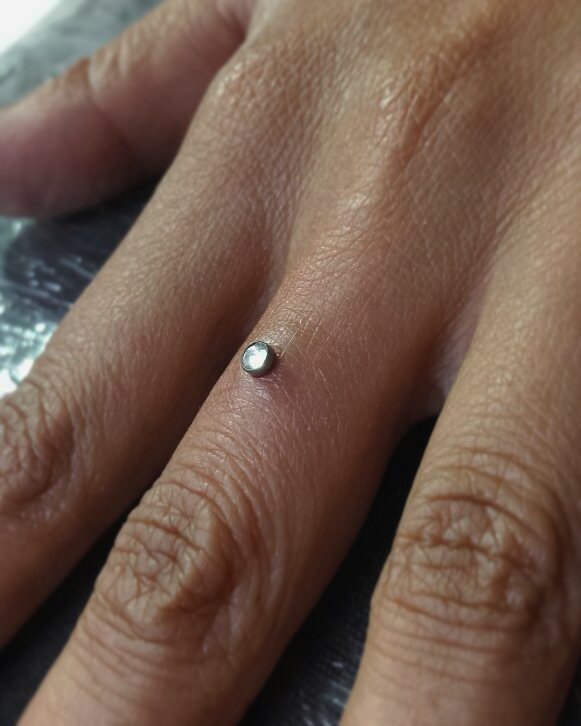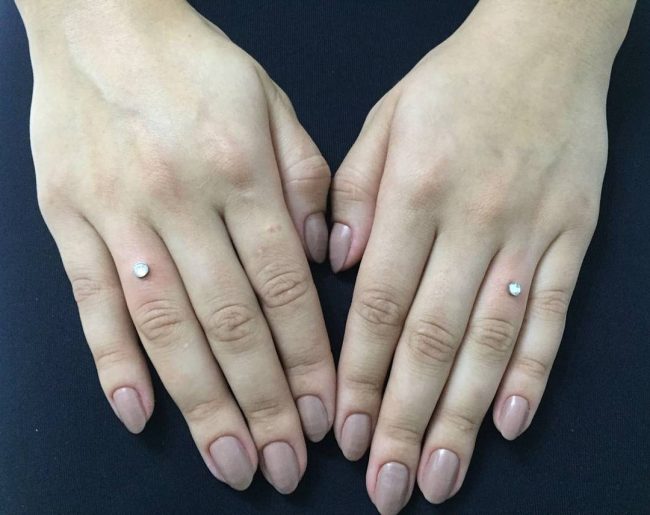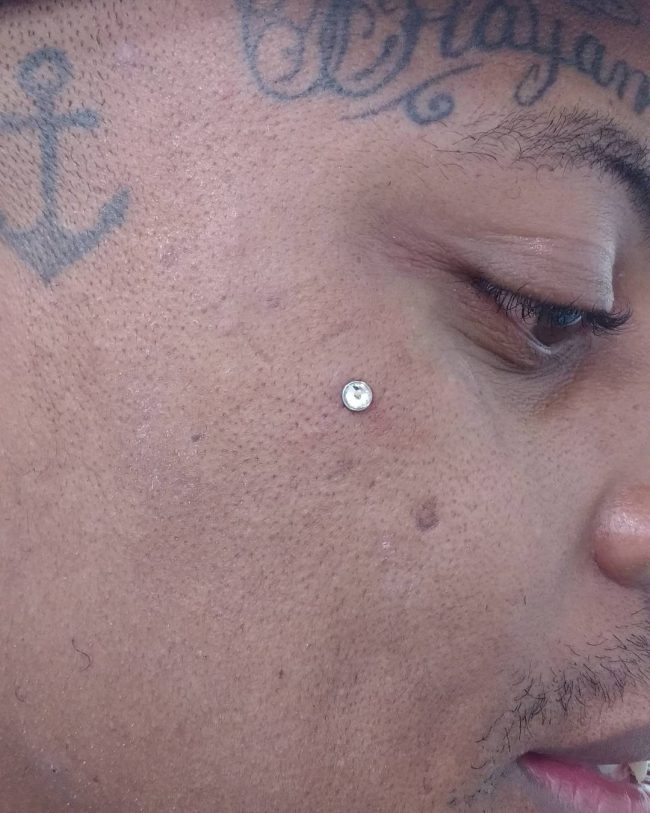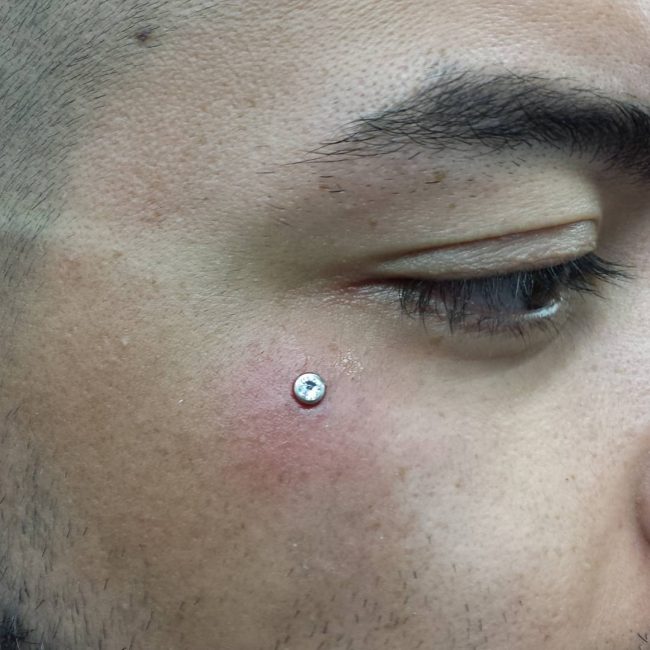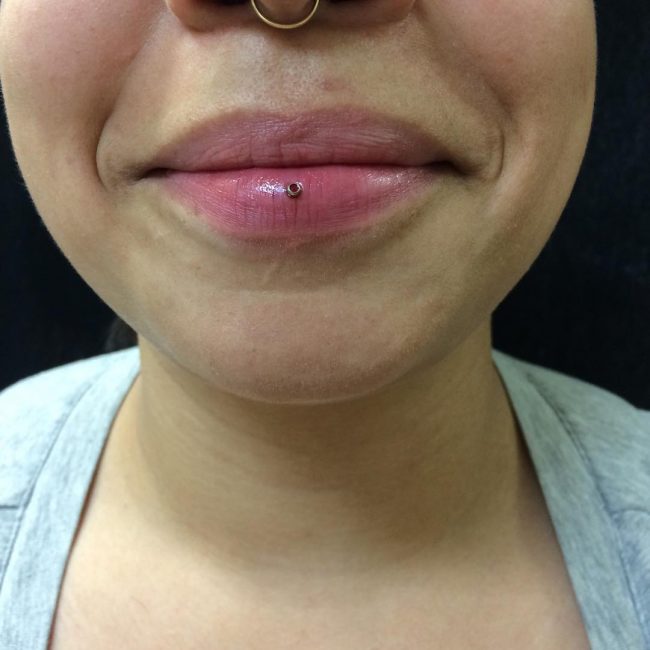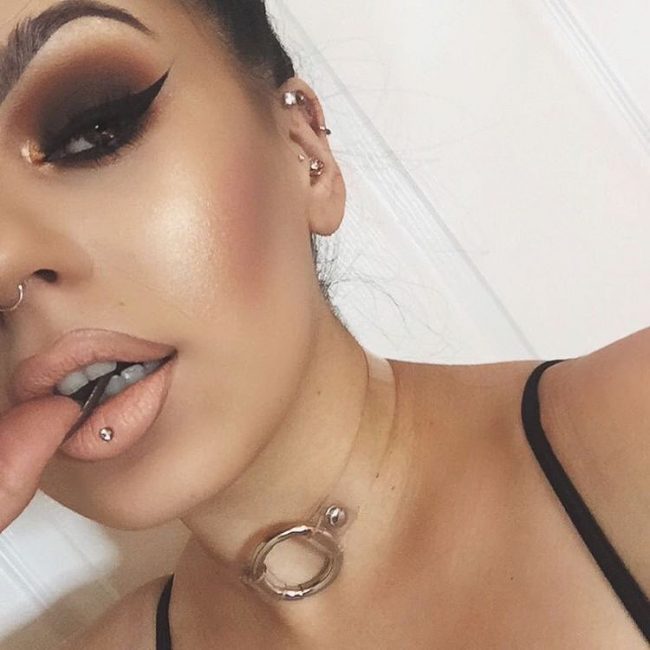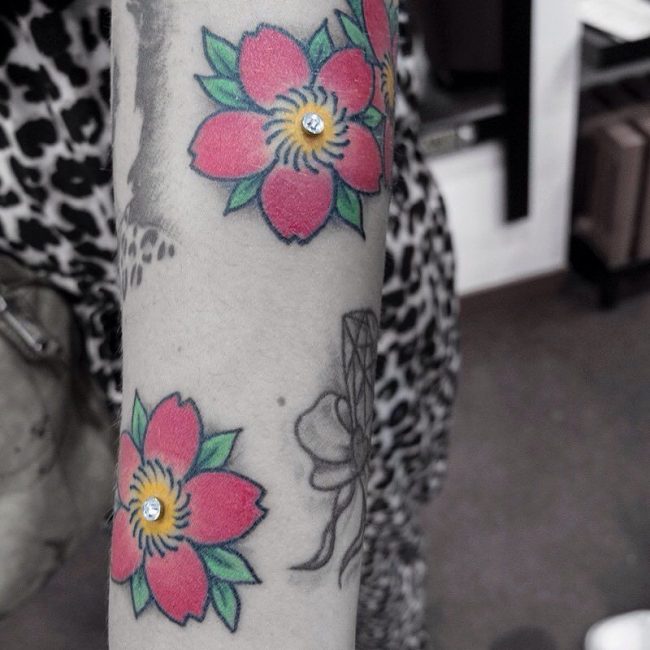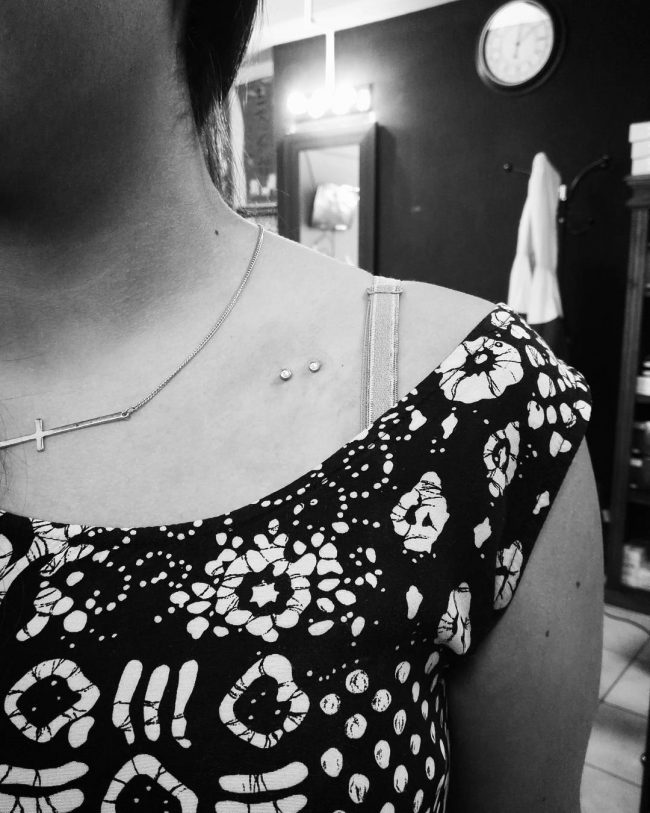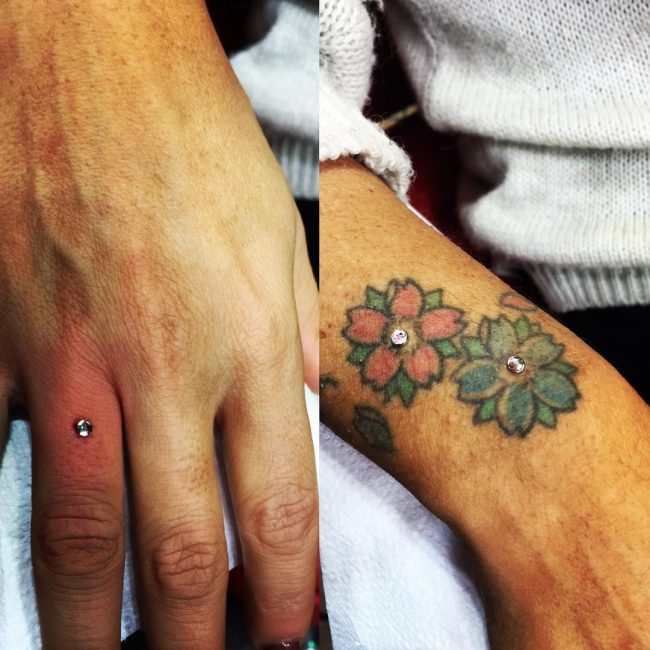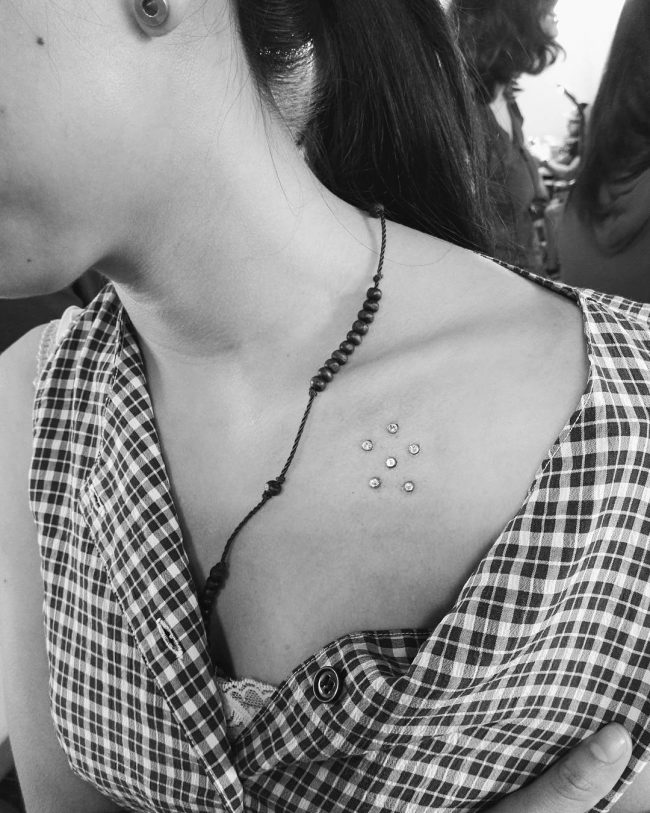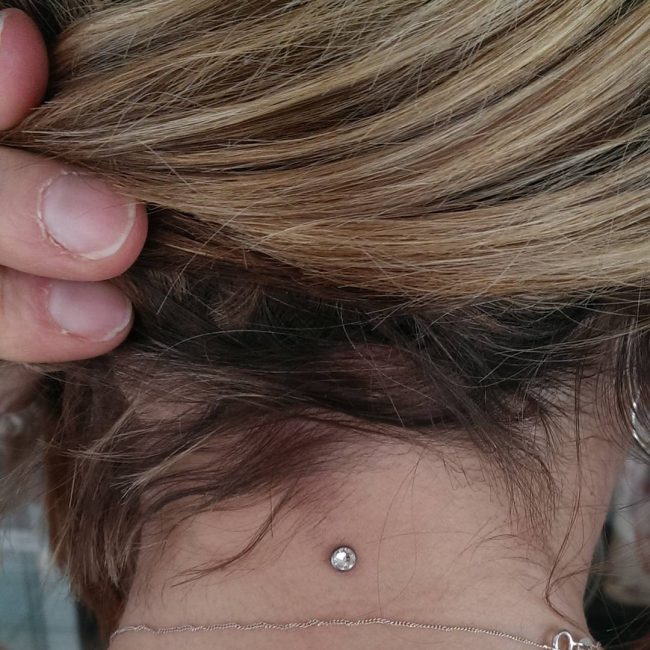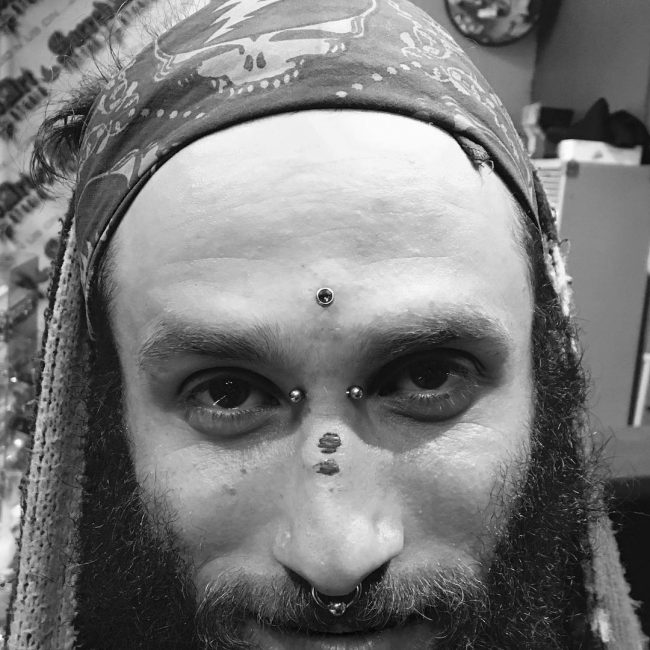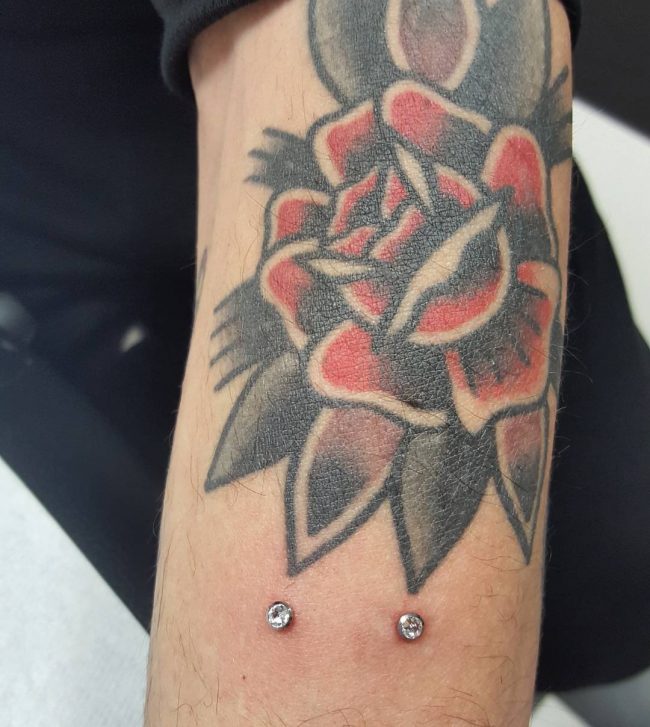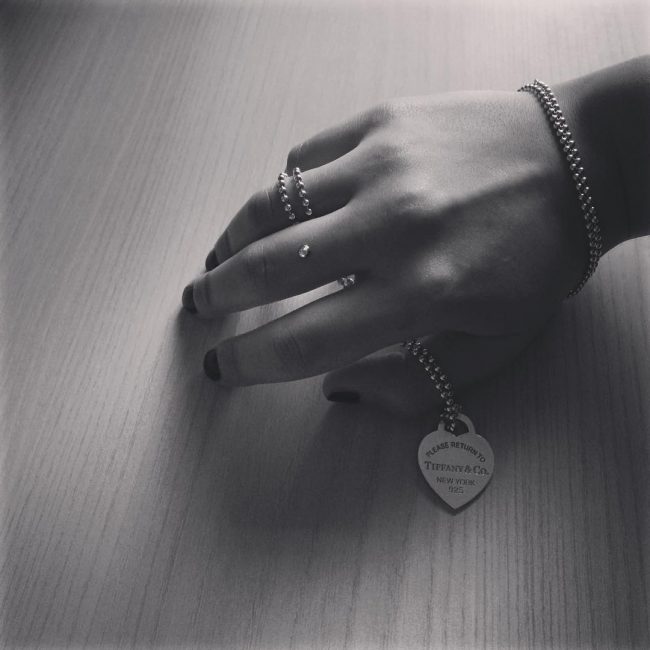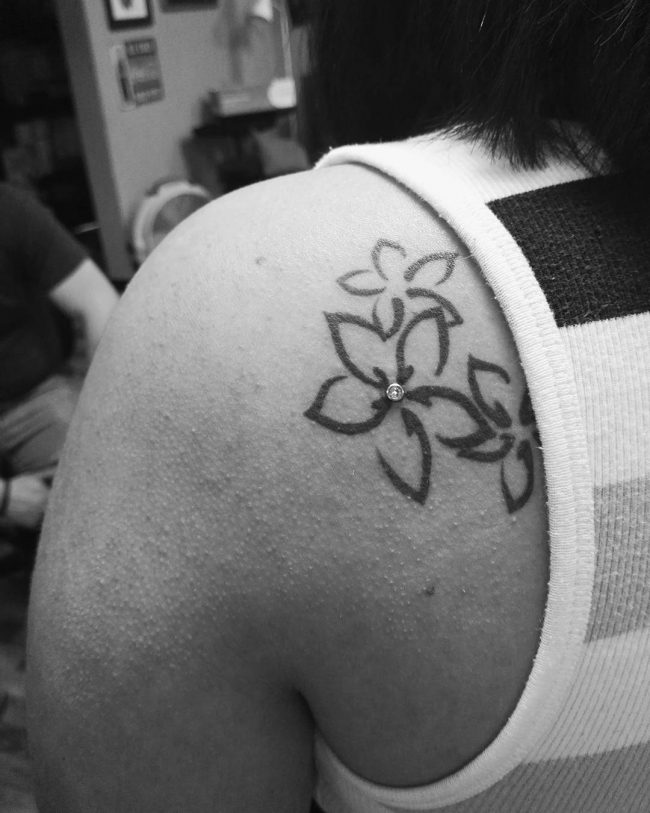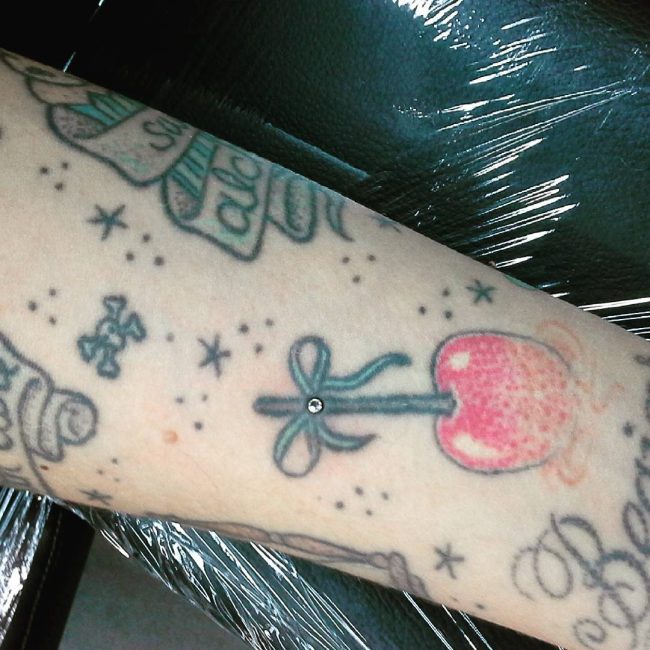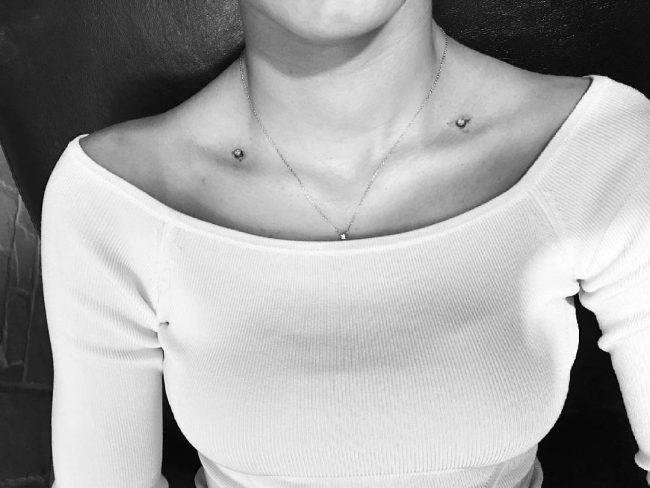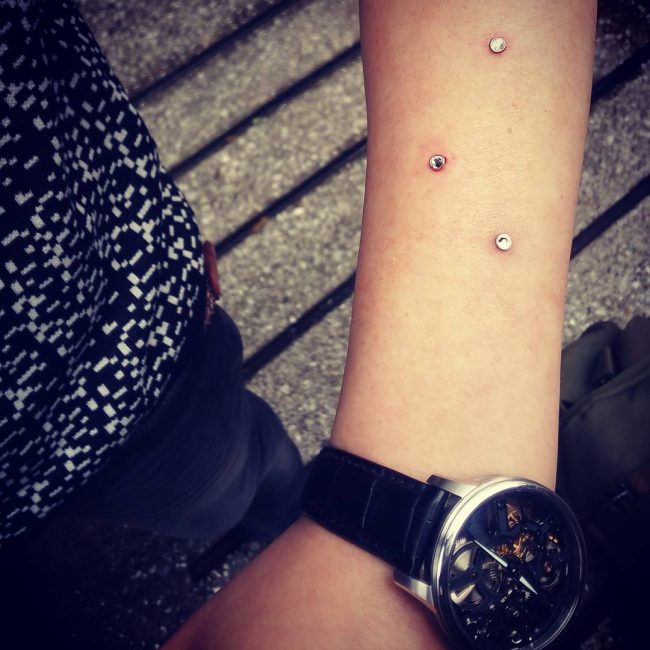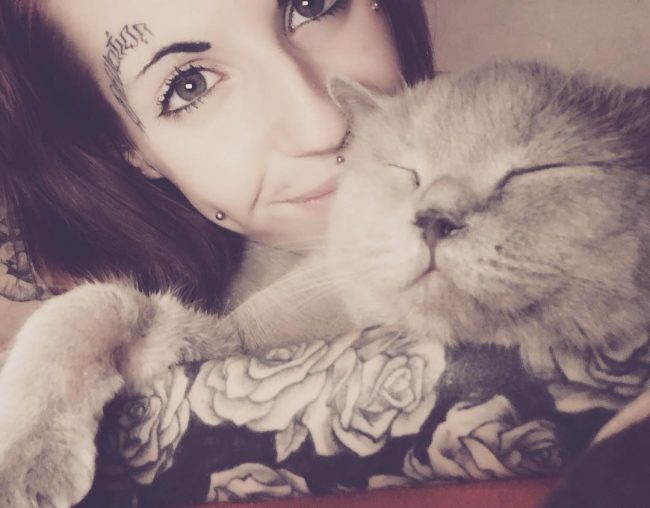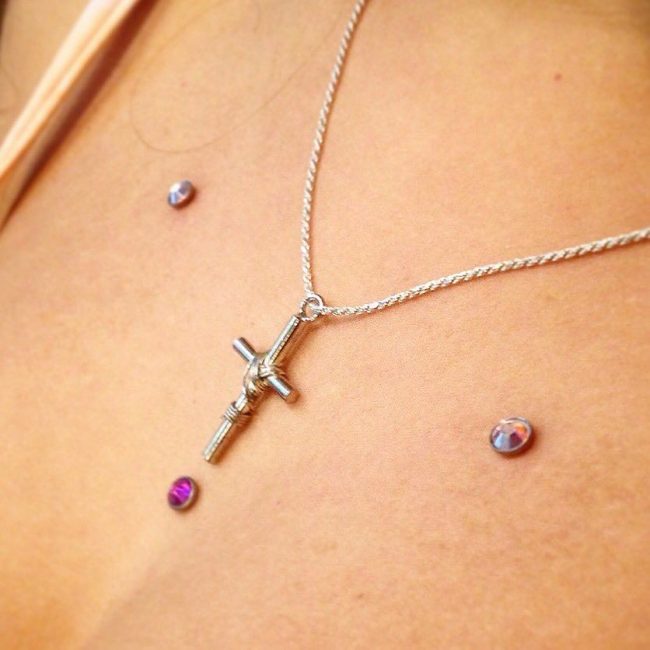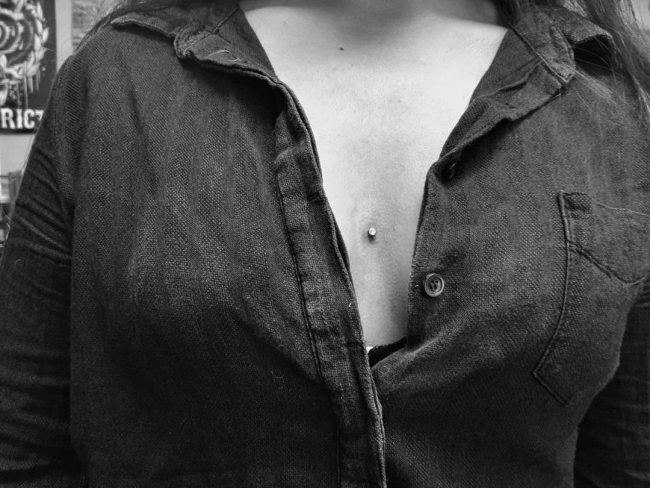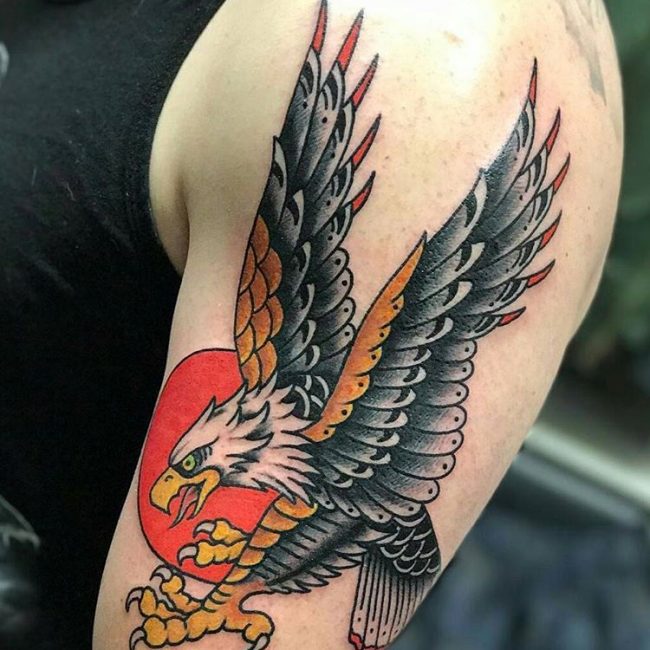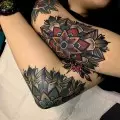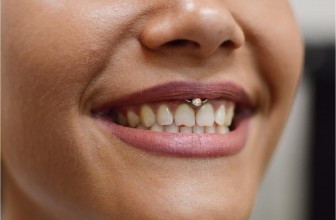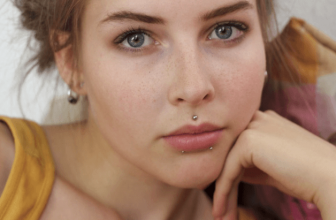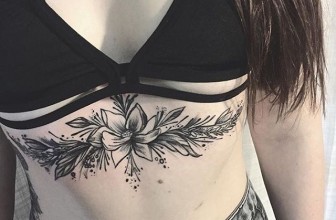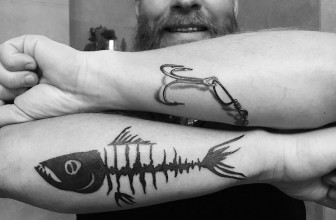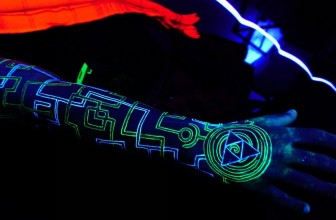55 Elegant Microdermal Piercing Ideas-All You Need to Know about Dermal Piercings
A microdermal piercing which you can also refer to as the dermal piercing is the kind that will always leave your friends talking. It is a very stylish form of body art whose popularity has been on a steady rise in the last couple of years.
And so if you love body art, or you just like keeping up with the trend a dermal piercing may be what you need to get. The best part about it is that you can have it in almost any place that you want including the face and head.
Contents:
What is Microdermal Piercing?
Most people know what a dermal piercing looks like, but a majority of those that do not have one do not understand what it is all about. However, it is a form of single point piercing than entails puncturing a flat surface of the body.
Just as the name suggest it only involves piercing the dermal section of the skin. Unlike other types that have a point of entry and exit, they have one opening from where the ornament emerges.
With this kind of piercing one end of the ornament or jewelry emerges from the skin while the other is inside the skin on the dermal layer. This design is what brings out the appearance of having some beads sticking on the surface of your skin.
The fact that you can have it on almost any flat part of the body is what is making the popularity of the microdermal piercing increase tremendously.
This type of piercing will allow you to use jewelry to do decorations in areas that are hard to do with the traditional piercing. In addition to this, you can also use it to create a beautiful pattern by having multiple piercing.
Some people will even get more creative and use them to create a letter that represents the name of a loved one.
back to menu ↑How Is It Done?
The microdermal piercing is a single-point type of piercing, and so the process of creating one is different from the traditional way of puncturing the body.
It does not have an entry and exit point, and so some skill and technique are necessary to create a unique hole that will be able to contain the jewelry without it falling out.
In general, to create it you have to insert an anchor on the dermis which will hold the jewelry in place, and you can do this using a dermal punch or needles.
Needles are the old method of creating these piercing, but they are still in use in many places. When using the needles, you will just go through the same process that you would with regular piercing.
But, instead of creating a hole that goes all the way through you should create an L-shaped pouch that will contain the anchor. Before doing anything make sure that you sterilize the area that you want to pierce.
Once you have the pouch, you should insert the base plate and anchor using forceps and do it very carefully.
The last step is to screw the jewelry into the plate but the process is way much more challenging and risky than most other types of piercing, and so you should only get it from a professional.
However, make sure that the needles that the piercer uses are the right ones for this type of piercing and the sizes are correct for the place you want to pierce.
The Dermal Punch is more efficient than using needles, and it not only creates uniform holes, but it is also less painful. However, the main difference between the two is the type of hole that they create and also the method of doing it.
Whereas the needles will make a pouch through skin separation, a punch will make it by removing a bit of tissue below the top layer of the skin. After this, the next step is to place the anchor and base plate before screwing in the jewelry.
The punch is safer than needles, and it also has a unique mechanism that ensures that the piercing does not go too deep. Most people prefer the punch over needles, but the only shortcoming is that it is illegal for non-medical personnel to use it in some places.
back to menu ↑Healing and Aftercare
Once the procedure is complete, the piercer will use band-aid or dressing to cover the area, and you should leave it there for a couple of days while ensuring that you interfere with it as little as possible. The piercing will take anywhere between one and three months to heal.
But, how you take care of it and how professional the piercing is will dictate the length. It is important to know that although it will require similar attention to what you would give other types of piercing, it is more sensitive than others, and so a little extra caution is necessary.
As the wound is healing it is vital to protect it against things like pulling moving around or even accidental removal. And this is because the soft tissue around the microdermal piercing gets irritated easily and this can lead to migration or increase the healing time.
Take a lot of care when drying your body and when wearing clothes to limit the chances of the jewelry catching on something. You also need to practice good hygiene, and this is for the whole of your body and not just the piercing.
Also, make sure that you eat well, get enough sleep and also avoid things like nicotine as they may slow your body’s ability to heal.
Cleaning the piercing is the only thing that might be challenging, but your piercer should be able to advise you on the right products to use for this purpose. However, even without this information you can use a salt solution as it is always very useful for cleaning and cleansing piercings.
To prepare the solution, you should add ¼ teaspoon of non-iodized salt to a cup of water and then spray the mixture on the wound at least twice a day.
However, do not leave the wound wet and instead use a paper tissue to dry it. Always make sure that what you use to dry the wound is clean every time. You may also need aftercare swabs and spray when taking care of the piercing.
In case you want to remove the piercing for the first time, you should let a professional do it to avoid subjecting it to unnecessary stress.
back to menu ↑Dermal Piercing Risks/Problems and How to Handle Them
If you get the microdermal piercing from a professional, it should heal well without any complications. However, things do not always go as you would want and so sometimes there can be some complications, and the best thing is to know how to handle them.
Some are just minor things, and so you do not necessarily have to keep going back to the piercer for help. Here are some of the common issues and how to handle them.
· Crusties: The body will excrete a clear substance known as lymph when it is trying to heal a wound and when it hardens it forms a whitish crust that most people refer to as “crusties.” However, they are nothing to worry about because they are easy to remove.
If you notice them on your dermal piercing, just rub then with cotton soaked in saline till they are soft enough to wipe off.
· Displacement: If you interfere with the piercing by snagging or bumping, it may be pushed deeper inside or pulled out, and the best thing to do is to visit the piercer immediately when this happens.
A displacement is severe because you will have to treat the piercing like a fresh one.
· Hypergranulation: Hypergranulation is typical of most types of piercing. It is a “red bump” that might form around the fistula to indicate that the ring is too tight.
However, for dermal piercing, it shows the presence of moisture and in most cases letting the wound breathe is all the solution you need for this problem.
· Infection: Infections are another common problem with most piercings and the signs include reddish streaks around the wound and yellowish pus. If you see any of these signs, visit a doctor for antibiotics and also improve your aftercare routine.
back to menu ↑Dermal Piercing Types
The nature of a dermal piercing makes it suitable for any flat surface on the body meaning that you can have it almost anywhere that you want. This versatility is what makes it very attractive, and this is more so with ladies. However, the following types or location are the most common.
Back Dermal
The back provides enough space to experiment with different types of body art including microdermal piercing. Ladies use the vast space on the back to create some distinct pattern with numerous dermal piercings.
However, most prefer to have them on the sides so that they can be visible when wearing sleeveless tops.
Finger Dermal
Finger dermal piercings are very popular, and this is because people need them to wear dermis rings. However, some are also very inventive, and they entail piercing the four fingers in the knuckle area to create a stylish appearance with some small and expensive jewelry.
Face and Ear Dermal
It is common to see ladies with some shiny bead-like jewelry on the face either mimicking tear drops or just forming a beautiful pattern. What most people do not know is that these designs are only possible due to the piercing on the dermis.
The ear is also another common place to have this body art and most people now prefer them over the regular ear piercings.
The hip and chest are the other common places that you can have microdermal piercing, but the golden rule is to have them anywhere you feel comfortable. It is also important to choose the right jewelry for your piercing.
You should not only consider the style and appearance but also make sure that whatever you choose is safe for this sensitive type of body piercing.
There are many jewelry options available ranging from real steel to titanium discs and the stylish flat tops with unique shapes, and so you can always be confident of an elegant and jeweled piercing.


